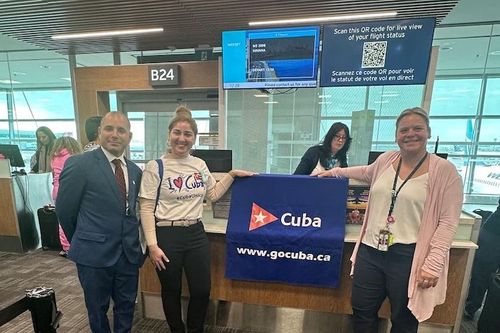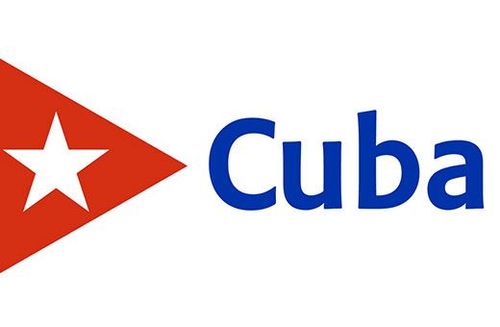Where travel agents earn, learn and save!
News / What today’s guests really want when it comes to hotel loyalty programs might surprise you
Comparing the pros and cons of points-based, cash-back, and instant rewards programs, and the guest perceptions of value they offer

Why do so many hotel loyalty programs fail? This is a good question, and it’s definitely one you should be asking if you are eager to set up a well-designed, effective loyalty program that mutually benefits your bottom line and your guests. These days, many guests feel loyalty programs no longer truly reward loyalty - but have become a marketing tool. In fact, less than half (46%) of high-value travelers are motivated by loyalty programs when booking travel. Why? Because many loyalty programs are barely hitting their mark.
There is also a discrepancy between hotel perceptions of loyalty programs. According to a study, hotel managers believe that 61% of guests sign up for loyalty programs while only 24% actually do in reality. Similarly, hotels perceive that 54% of guests will find offers relevant, while in reality, only 22% of guests believe that offers made by loyalty programs are relevant.
The hospitality industry sits atop the promise of guest-centric incentives, with a long list of loyalty programs. Many traditional loyalty programs have become a point of contention frequently presenting travelers with lackluster rewards or barriers to redemption that negate the desired effect of the program.
According to Accenture:
- Only 18% of consumers engage with every loyalty program they belong to
- Just 22% of members say they are very satisfied with the personalization they receive in loyalty programs
- 29% of customers wish that the rewards on offer were more interesting
As explained in Deloitte’s Hotel Customer Loyalty survey, “to turn your customers into enthusiastic, even passionate brand devotees, you need to understand the patterns in how different travelers view and use rewards. And you have to use that insight to craft a program that stands above the ordinary and the expected.”
To understand what works (and perhaps more importantly, what doesn’t), we first must consider the most popular types of programs currently offered to travelers.
Points-Based Rewards
How It Works: Points-based reward systems operate on a basic principle – reward guests for taking action by offering them points they can redeem for free items or services, perks, upgrades, etc. These points do not hold any value beyond the brand offering them. Still, they can be leveraged for various actions even beyond booking/purchase behavior, such as social media engagement, reviews, and so on.
Often, point-based systems adhere to a tiered hierarchy that encourages guests to accumulate more points to reach a higher tier of perks and rewards. This format gives travelers a clear goal: the higher their tier (and the more they purchase from and engage with that hotel or airline), the more exclusive and exciting the rewards they’ll receive.
What It's Missing: Since point-based programs are free to sign up for, there is little to no barrier to entry in regards to participation; however, the ‘transaction first, benefits later’ often lacks the retention and enthusiasm it initially sets out to garner. According to a survey by Maritz Loyalty Marketing, 70% of customers abandon loyalty programs because it takes too long to gain enough points. Often, the rewards offered by these programs lack the personalization or perceived value required for those incentives to feel truly desirable or exclusive.
Ultimately, if hotels cannot recognize what perks guests really want, their point-based loyalty program will fail to incentivize guest behavior or long-term loyalty and retention truly.
Personalization is, after all, a primary driver of modern guest behavior. Google research indicates that 36% of travelers would likely pay more for services if a travel brand tailored its information and trip experiences to personal preferences or past behavior. Moreover, in some cases, the higher reward tiers, the more exclusive and desirable rewards are unattainable for most guests. By the time they accumulate enough points to unlock those rewards, some of their points may have already expired.
Cash-Back Programs
How It Works: Cash-back rewards programs are reminiscent of points-based programs in many ways. Hotel guests become eligible for “cash-back” incentives when they spend a certain amount at a hotel. Much like your cash-back credit card, these programs are easy to opt-in to, and guests can earn a certain percentage of their purchase back to spend on the property or, in some cases, at partnering hotels and hospitality brands. Many independent hotels have tried this model in lieu of big-budget loyalty programs marketed by large brands.
What It's Missing: If it sounds pretty simple, that’s because it is – but what’s the catch? Just as the cash-back system is similar to its points-based counterpart, the criticisms associated with this model are related to perceived value and ease of redemption. According to loyalty veteran Howard Schneider, cashback rewards are not very motivational. “Cash is fungible and generic; and over time, consumers don’t even notice it,” and it comes off as nothing more than a small discount. Once cash is ‘returned,’ the guest can spend it anywhere else, which cuts off the cycle of profit for the hotel in question.
Frequently, guests may also face specific qualification barriers (i.e., minimum spend requirements) or will be unable to effectively utilize and enjoy their cash-back reward before the end of an earning period. Understandably, this can negate or diminish the perceived value of that rewards program in the eyes of a guest.
Instant Gratification Rewards System: A New Era of Loyalty
When considering the pros and cons of both points-based and cash-back loyalty systems, we recognize a theme – both models rely on delayed gratification. Yes, travelers are rewarded for taking action, but that reward cannot be realized or enjoyed until much later. Understandably, if the rewards offered down the line are perceivably lackluster, this format may not elicit much excitement from prospective travelers. Playing off this realization, a new kind of rewards system is born: an AI-powered, instant gratification loyalty model.
How It Works: The Laasie rewards system motivates customer loyalty with personalized, instantly-selectable rewards offered throughout the traveler’s journey (booking decisions, survey participation, etc.) via an extensive marketplace of high-value vendors. As soon as the guest performs the desired action, they can claim the personalized reward of their choice, which helps hospitality brands increase net revenue, drive member engagement, and build dynamic customer relationships. Finally, hotels can leverage AI and big data to motivate customer actions in a meaningful way, giving guests the instant gratification and recognition with every interaction they’ve desired – in a way traditional loyalty programs never could.
The best part? There is no downside. An instant-gratification rewards model provides tangible, undeniable value to both the hotel and the guest, leading to higher engagement and guest satisfaction. Using an instant gratification loyalty model, hotels enjoy increased booking conversion of 43% on average via a low-cost channel.
Much like point-based and cash-back systems, the barrier to entry is low but, in the case of Laasie’s reward platform, barriers to redemption are also eliminated. In contrast, the perceived value of rewards is heightened. Finally, hoteliers can benefit from a reimagined and reinvigorated loyalty program that isn’t an expense. Instead, it’s a true revenue driver and turn-key relationship builder unlike anything else on the market.
At the end of the day, there are two ways to grow your hotel’s business: first, attracting new guests. And second, by retaining existing guests and increasing guest lifetime value. As guest expectations evolve, the winners will be hotels that use innovative rewards programs that actively support guest desires for personalized offers, instant gratification, and tailored experiences.











